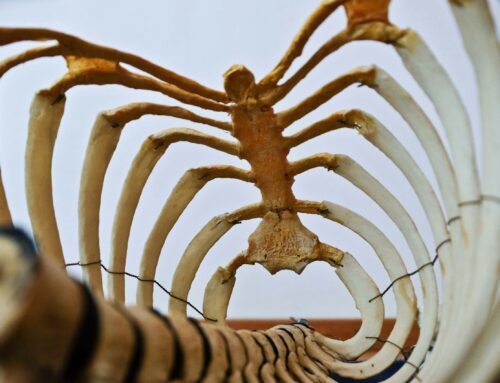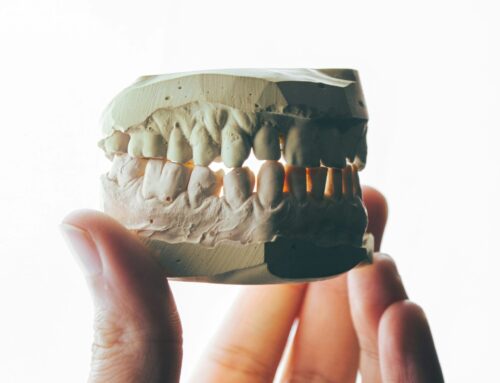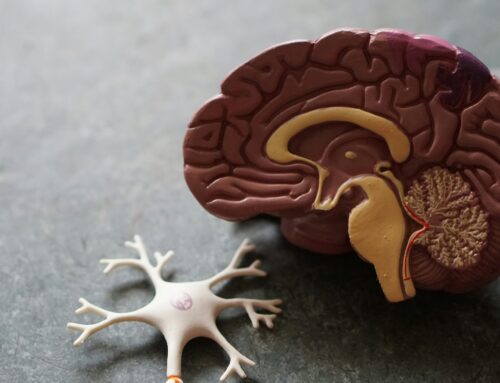Ankle sprains are among the most common injuries of the musculoskeletal system. They affect the ankle joint, which comprises the tibia (shinbone), fibula (calf bone), and talus (ankle bone), along with a multitude of ligaments that connect and stabilize these bones. A sprain occurs when one or more of these ligaments are overstretched or torn.
Frequency and Distribution in the Population
Ankle sprains account for about 15-20% of all sports injuries, with an estimated 1 in 10,000 people experiencing such an injury daily. They are particularly common in sports involving rapid direction changes, jumps, or sudden stops, such as basketball, soccer, volleyball, and track and field.
Studies show that adolescents and young adults, especially those between 15 and 25 years old, have a higher risk of ankle sprains, particularly if they regularly participate in sports activities. Women may be slightly more affected than men, possibly due to differences in ligament elasticity and joint stability.
Causes of Ankle Sprains
The most common causes of an ankle sprain involve sudden movements that strain the ankle joint beyond its normal range of motion:
- Twisting of the foot: This is the most common cause, where the foot twists inward (inversion) or outward (eversion).
- Uneven surfaces: Running or walking on uneven terrain increases the risk of twisting the ankle.
- Sudden direction changes: Sports that require quick lateral movements, such as tennis or basketball, are particularly risky.
- Muscular weakness or instability: Insufficient muscle strength or previous injuries can lead to ankle instability and increase the risk of a sprain.
- Insufficient warm-up: A lack of proper warm-up before sports activity can decrease the elasticity and flexibility of ligaments and muscles.
Symptoms of Ankle Sprains
The symptoms of an ankle sprain vary depending on the severity of the injury:
- Pain: Often occurs immediately after the injury, usually localized around the injured ligament.
- Swelling: A swelling may develop within minutes to hours, caused by fluid accumulation in the tissue.
- Bruising (hematoma): A bruise may form due to blood leaking from damaged blood vessels under the skin.
- Limited mobility: Moving the foot and ankle can be painful and restricted.
- Instability: In more severe cases, the joint may feel “wobbly” or unstable.
Types of Ankle Sprains
Ankle sprains are typically classified into three grades, depending on the severity of the injury:
- Grade I (Mild): A slight overstretch or micro-tearing of the ligament. Pain and swelling are minimal, and there is little or no joint instability.
- Grade II (Moderate): A partial tear of the ligament. Swelling and pain are more pronounced, and moderate instability may occur.
- Grade III (Severe): A complete tear of the ligament. Significant swelling, bruising, and joint instability occur, and the affected person may not be able to walk normally or bear weight on the affected leg.
Treatment of Ankle Sprains
The treatment of ankle sprains depends on the severity of the injury and aims to reduce pain and swelling, promote healing, and restore joint function.
Acute Treatment: RICE Protocol
The RICE protocol (Rest, Ice, Compression, Elevation) is a widely used initial treatment method:
- Rest (R): Immediate reduction of weight-bearing and immobilization of the affected joint.
- Ice (I): Application of cold to relieve pain and reduce swelling. However, ice should not be placed directly on the skin to avoid frostbite.
- Compression (C): Applying a compression bandage to control swelling.
- Elevation (E): The affected leg should be elevated to promote blood and fluid return and minimize swelling.
Medication
- Pain relievers: Nonsteroidal anti-inflammatory drugs (NSAIDs) such as ibuprofen or diclofenac are commonly used to reduce pain and inflammation.
- Anti-inflammatory drugs: These medications can also help alleviate symptoms.
Pain Management for Ankle Sprains
Pain management is a crucial part of treating ankle sprains. In addition to medication, various non-pharmacological methods can be applied:
- Cryotherapy: Regular application of ice packs for pain relief.
- Electrotherapy: Treatments such as TENS (transcutaneous electrical nerve stimulation) to reduce pain.
- Manual therapy: Techniques to mobilize the ankle joint and relieve muscle tension.
- Relaxation techniques: Methods such as deep breathing and progressive muscle relaxation can help reduce the perception of pain.
Physical Therapy and Rehabilitation
Physical therapy plays a central role in rehabilitation after an ankle sprain. The main goal is to restore joint mobility, strength, and stability to prevent future injuries. Physical therapy treatment typically consists of several phases, each with specific goals.
Acute Phase:
- Inflammation Control and Mobilization (1-7 Days After Injury)
- Pain relief
- Swelling reduction
- Maintenance of mobility
- Therapeutic Measures:
- Immobilization and rest: In the first days after the injury, the ankle is often stabilized with splints or bandages to minimize strain. However, mobilization is essential to promote circulation and prevent stiffness.
- Cryotherapy: The application of ice packs (15-20 minutes, several times a day) helps reduce swelling and pain, often supported by compression bandages.
- Passive mobilization: The physical therapist may perform passive movements of the ankle to maintain joint mobility and minimize scar tissue formation.
- Manual lymph drainage: This technique helps drain tissue fluid and reduce swelling.
- Gentle stretching exercises: Light stretches of the surrounding muscles (e.g., calf muscles) can be performed as long as they do not cause pain.
Building Phase:
- Restoration of Mobility and Muscle Activation (1-3 Weeks After Injury)
- Improvement of mobility
- Restoration of muscle function
- Improvement of proprioception
- Therapeutic Measures:
- Active mobilization: The patient begins to actively move the ankle to regain mobility. Exercises may include dorsal (raising the foot) and plantar (lowering the foot) movements, as well as rotation.
- Strengthening exercises: Gentle strengthening exercises are introduced to strengthen the muscles around the ankle. Simple exercises like foot lifts or pulling a resistance band can be used.
- Proprioception training: Training proprioception is crucial to improving ankle stability. This includes exercises such as standing on one leg, initially on firm ground and then on an unstable surface like a balance cushion. These exercises enhance the ankle’s sensory feedback and help reduce the risk of re-injury.
- Manual therapy: The physical therapist may use techniques such as ankle joint mobilization to improve mobility and relieve muscle tension.
Functional Phase:
- Functional Training and Load Increase (4-6 Weeks After Injury)
- Increase in load tolerance
- Restoration of full functionality
- Preparation for sports activities
- Therapeutic Measures:
- Advanced strengthening exercises: Exercises become more intense to further build muscle strength. This includes calf raises, lateral leg raises, and exercises with resistance bands to strengthen the lower leg muscles and stabilize the ankle.
- Walking and running training: The patient begins with light walking training, followed by treadmill exercises. Proper walking and running techniques are emphasized to avoid incorrect loading.
- Dynamic proprioception training: More complex exercises, such as jumping on unstable surfaces or lateral jumps, promote the dynamism and responsiveness of the ankle. The goal is to prepare the joint for the demands of sports or daily activities.
- Balance training: Exercises with balance boards or on soft surfaces help to further improve stability and coordination.
Return to Sports:
- Sport-Specific Training and Injury Prevention (From 6 Weeks After Injury)
- Return to sports activities
- Minimizing the risk of re-injury
- Therapeutic Measures:
- Sport-specific training: The physical therapist develops a training program tailored to the specific requirements of the patient’s sport. This may include direction changes, jumps, stop-and-go movements, or other sport-relevant movements.
- Coordination and agility: Exercises that promote coordination and responsiveness are especially important for athletes. These can include quick direction changes, plyometrics (jump training), and sprint exercises.
- Functional tests:** Before fully returning to sports, the physical therapist conducts tests to check the stability, strength, and mobility of the ankle. These tests include the single-leg hop test or the star excursion balance test to assess the joint’s functional stability.
- Preventive measures: The physical therapist trains the patient in techniques to prevent ankle injuries. This includes regular exercises to strengthen and stabilize the ankle, wearing appropriate shoes, and possibly applying bandages or tapes during sports activities.
Long-Term Rehabilitation and Maintenance of Joint Stability
After returning to normal activities and sports challenges, regular exercises to maintain joint stability and strength are essential to minimize the risk of future injuries. The physical therapist ensures that the patient incorporates the necessary exercises into their regular training program and makes adjustments as needed.
Exercises to Stabilize and Strengthen the Ankle
After healing from an ankle sprain, it is important to perform exercises that improve the stability and strength of the joint to prevent future injuries. Here are some recommended exercises:
- Calf Raises: Stand upright with feet shoulder-width apart. Rise onto your toes and slowly lower yourself back down. This exercise strengthens the calf muscles and stabilizes the ankle. Perform 3 sets of 15 repetitions.
- Single-Leg Stand on an Unstable Surface: Stand on one leg on a soft pillow or balance cushion. This exercise improves proprioception and stabilizes the joint. Hold this position for 30 seconds without loading the other leg. Repeat 3 times per leg.
- Foot Circles: Sit down and extend the affected leg. Slowly perform circular movements with the foot to improve mobility. Rotate 10 times clockwise and 10 times counterclockwise.
- Lateral Leg Raises with Resistance Bands: Lie on your side and attach a resistance band around both ankles. Slowly raise the upper leg and lower it back down. This exercise strengthens the lateral muscles of the ankle. Perform 3 sets of 12 repetitions per leg.
- Ankle Inversion and Eversion with Resistance Bands: Sit on the floor with your legs extended. Attach one end of a resistance band to a fixed object and the other to your foot. Rotate the foot inward (inversion) and then outward (eversion) against the resistance of the band. Perform 3 sets of 15 repetitions for each movement.
General Recommendations:
Perform these exercises regularly to strengthen the muscles and ligaments of the ankle and prevent future sprains.
Always warm up sufficiently before engaging in physical activity.
If you experience pain during the exercises, stop and consult a physical therapist or physician.
In conclusion, an individualized and comprehensive treatment plan that includes the acute phase, rehabilitation, and preventive measures is essential to effectively treat an ankle sprain and avoid complications or re-injuries.







Leave A Comment